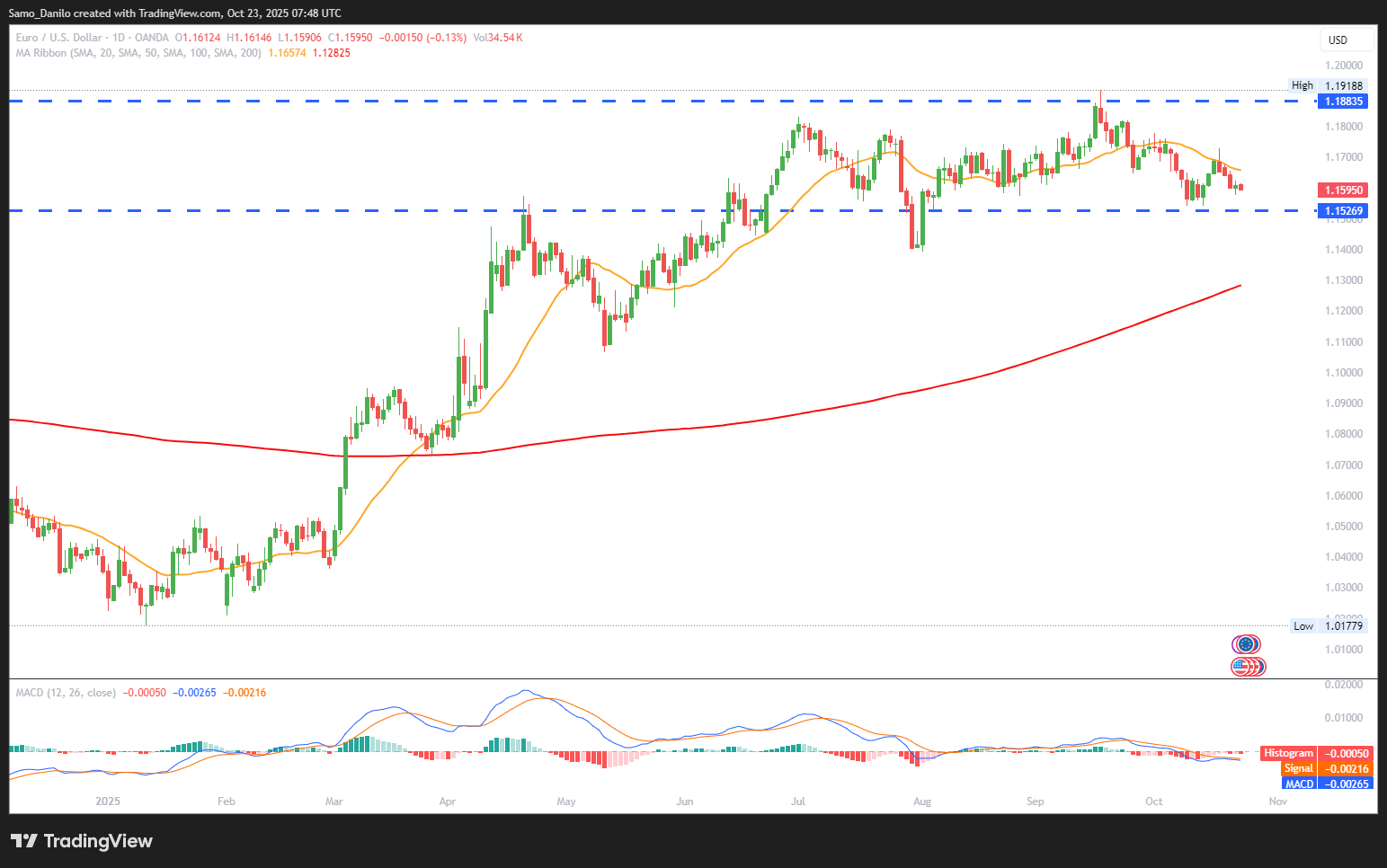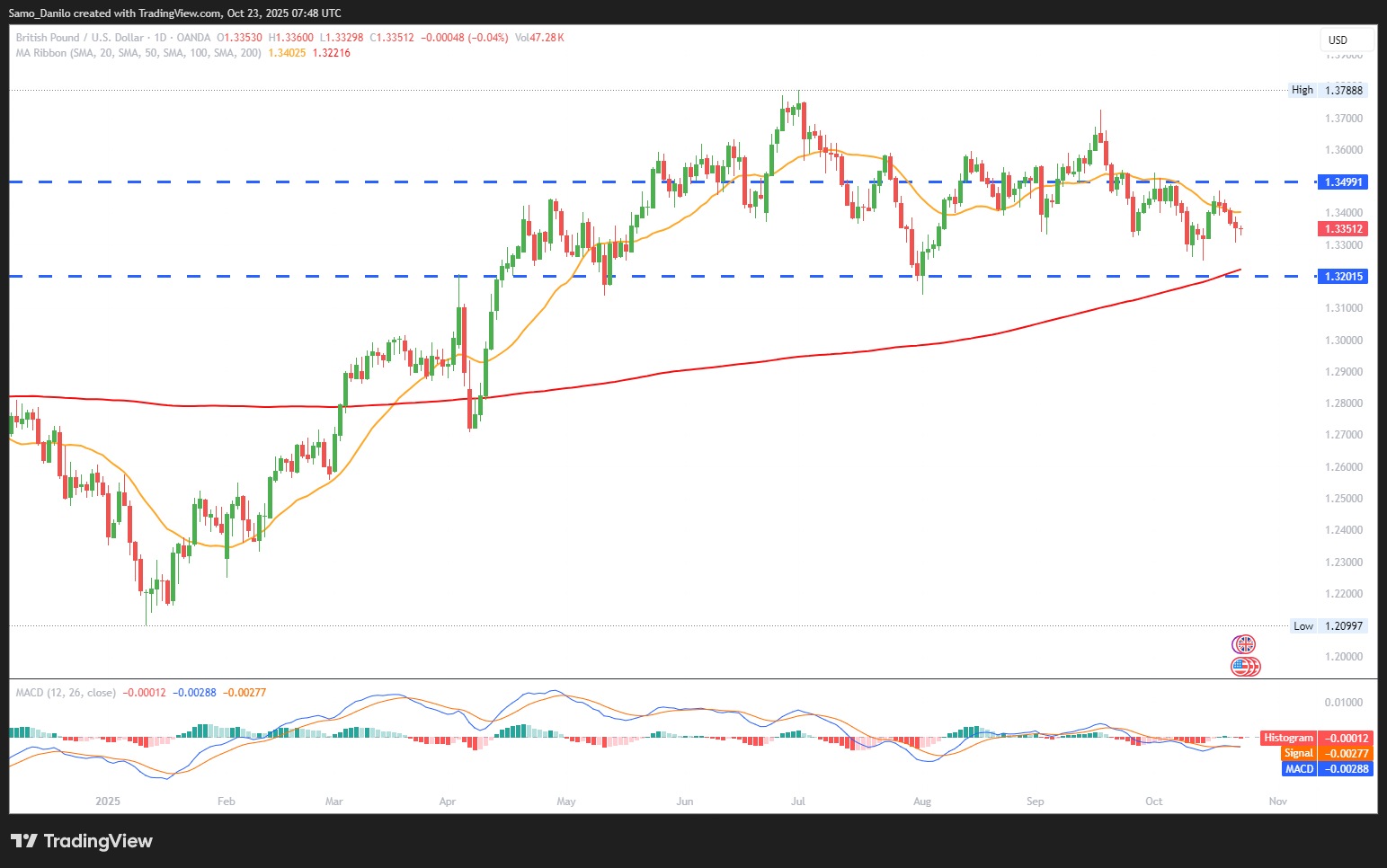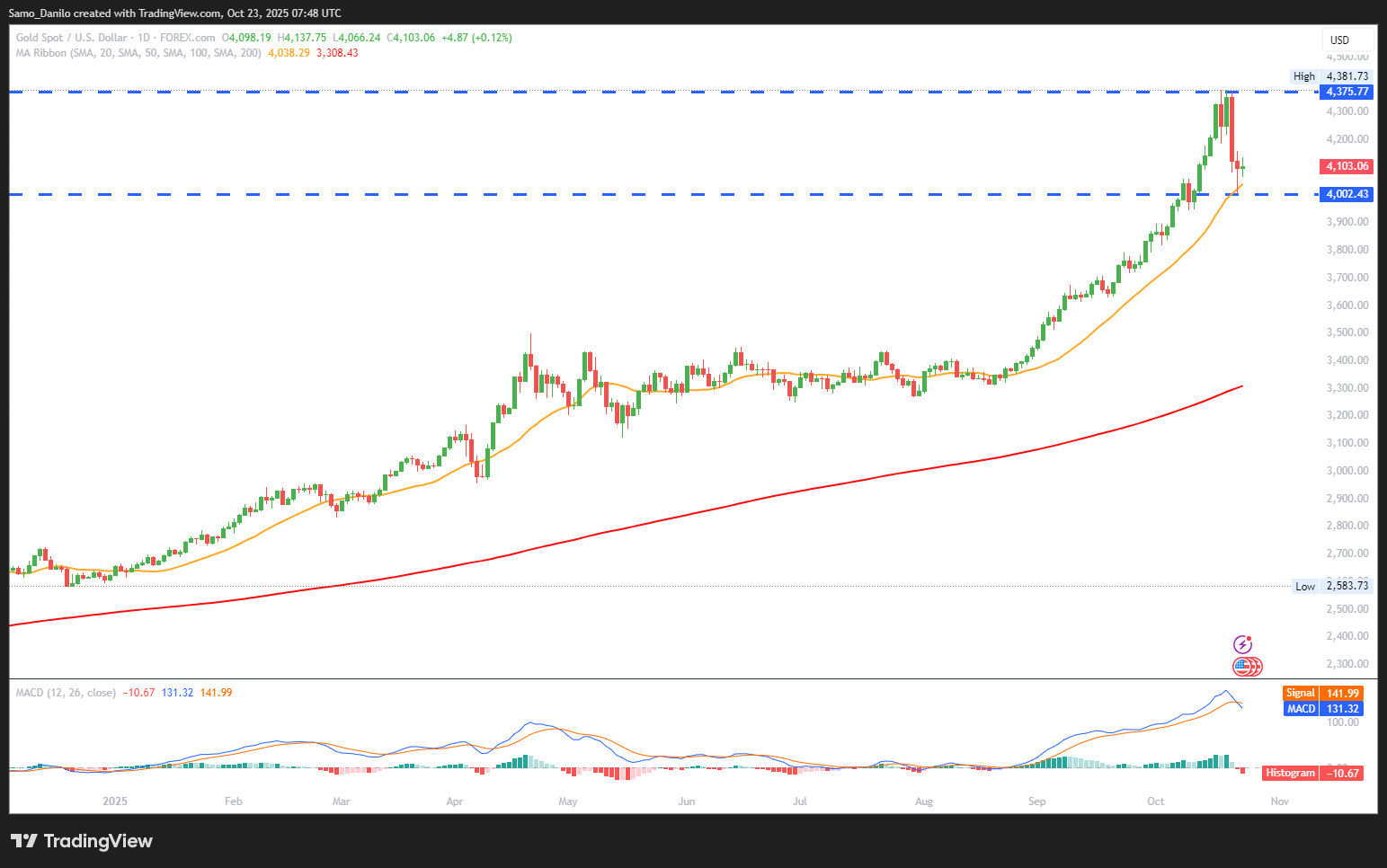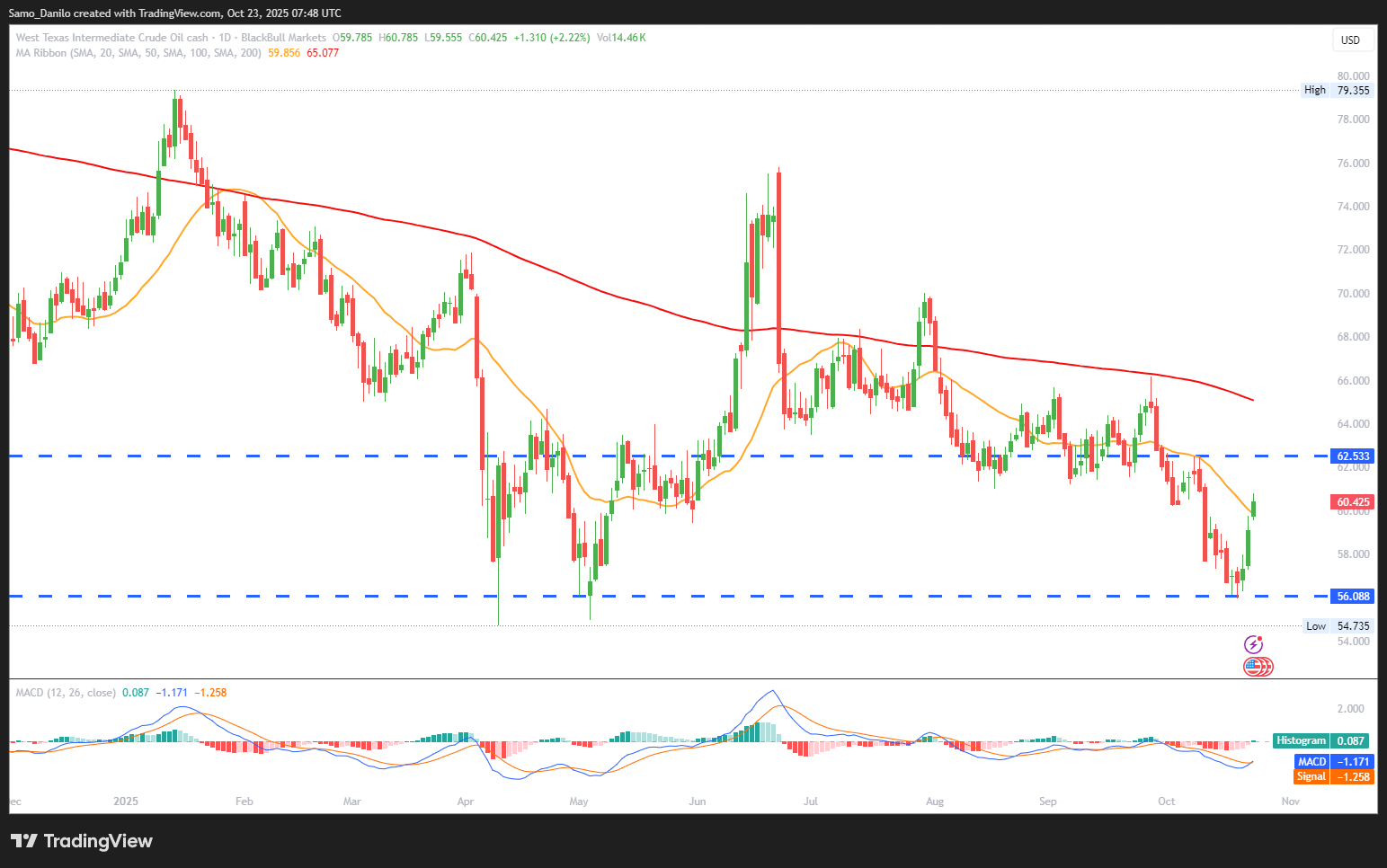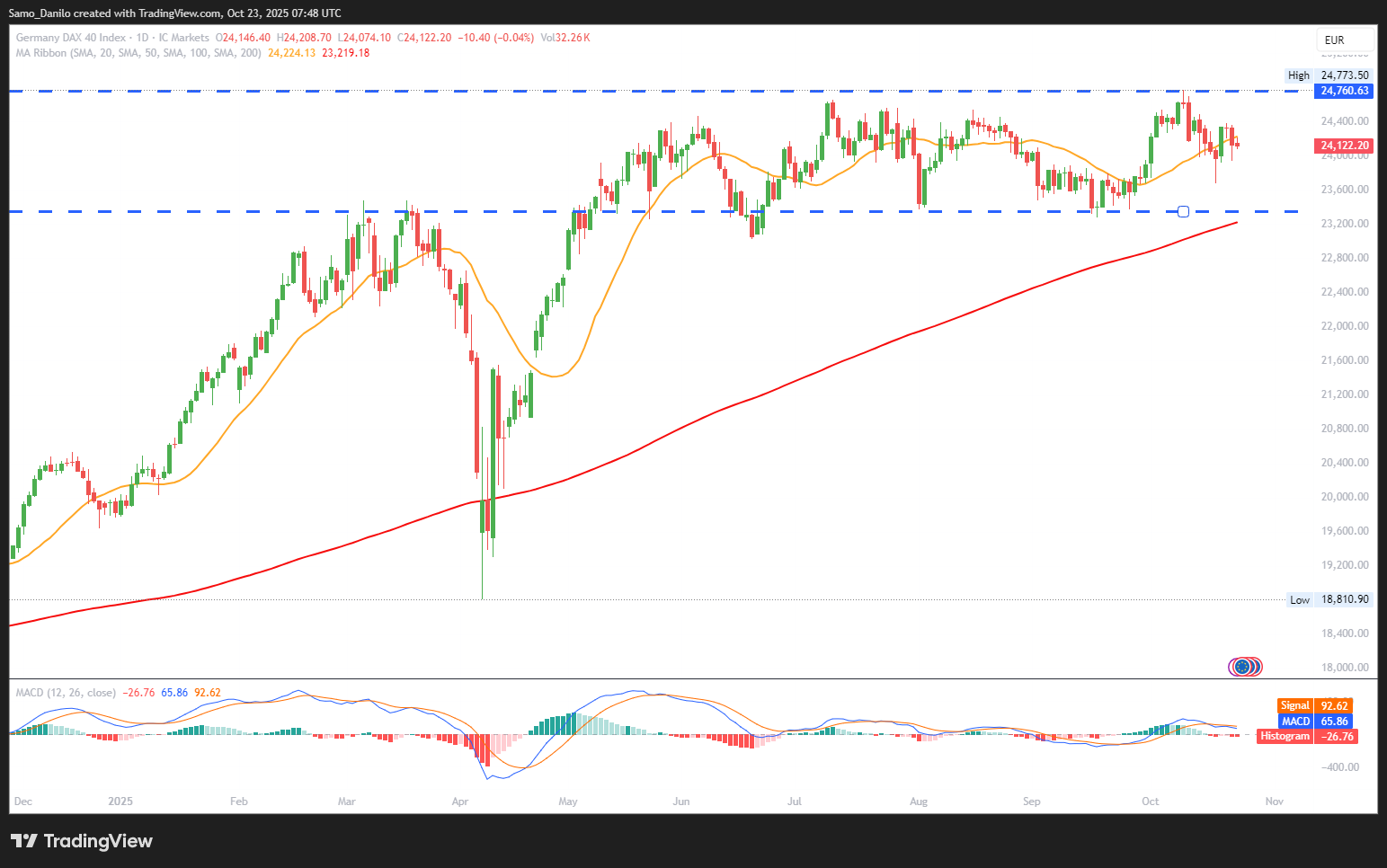EURUSD
- EUR/USD Price: The euro remains resilient, trading near the 1.1600 mark during Thursday’s European session as traders weigh a mix of geopolitical developments and shifting policy expectations within the Eurozone.
- EU–China Trade: EU Trade Chief Maros Sefcovic announced an emergency meeting with China’s Commerce Minister to discuss rare earth export restrictions and the Dutch government’s takeover of chipmaker Nexperia, signaling escalating EU–China trade frictions.
- EU–US Sanctions: The EU and US jointly imposed new sanctions on Moscow, accusing Russia of failing to engage in peace talks over Ukraine. The move comes amid diplomatic uncertainty after the postponement of the Trump–Putin summit, further dampening global risk appetite.
- ECB Policy: ECB policymaker Martins Kazaks suggested that the next policy shift could be “as easily a hike as a cut,” reflecting internal debate over future monetary direction as inflation stabilizes near target and growth remains subdued.
- Next Week: Traders widely expect the European Central Bank to keep rates unchanged at next week’s meeting, with market odds around 98%, as policymakers opt for a wait-and-see approach amid mixed economic signals.
Closing statement: The EUR/USD steadies near 1.1600 amid policy uncertainty and geopolitical friction. While the ECB is expected to stay on hold, developments in EU–China relations and sanctions against Russia could shape short-term euro sentiment.
GBPUSD
- GBP/USD Price: The British pound weakens further, trading near 1.3350 on Thursday amid a continued broad dollar strength and growing expectations of BoE policy easing.
- UK Inflation: The UK CPI rose 3.8% YoY in September, slightly below the expected 4.0%, yet remains well above the BoE’s 2% target, reflecting persistent price pressures in core categories.
- BoE Cuts: Following softer inflation and wage growth data, investors increased bets on BoE rate cuts, now pricing 9bps of easing for November and around 60bps over the next 12 months, signaling a dovish market outlook.
- US–China Trade: Reports suggest the Trump administration is weighing curbs on tech exports to China, targeting items from laptops to jet engines, as a response to Beijing’s rare earth export limits, which could renew global trade uncertainty.
- UK Economy: A cybersecurity group estimated that the Jaguar Land Rover hack cost the UK economy £1.9 billion, marking it as possibly the most expensive cyber incident in UK history, raising fresh concerns about industrial and data resilience.
Closing statement: The GBP/USD remains under heavy pressure, with markets increasingly convinced the BoE will pivot toward rate cuts in the coming months. Broader US–China tensions and domestic economic vulnerabilities continue to weigh on sterling sentiment.
XAUUSD
- XAU/USD Price: The XAU/USD pair trades higher above $4,100 early Thursday in Europe, supported by a steady decline in U.S. yields and increased safe-haven interest ahead of key inflation data.
- Historic Year: Gold has soared over 50% year-to-date, marking one of its strongest rallies in modern history, surpassing gains seen after 9/11, the 2008 financial crisis, and the Covid-19 pandemic, as investors continue to favor tangible assets amid global uncertainty.
- China Exports: At a meeting with over 170 foreign firms, China’s Vice Commerce Minister Ling Ji emphasized that new rare earth export rules are not aimed at trade disruption, pledging to approve legitimate transactions to ensure supply chain stability.
- Fed Outlook: Investors remain cautious ahead of Friday’s U.S. CPI release, viewed as crucial for confirming expectations of a 25bps Fed rate cut next week and potentially another 0.25% in December, as reflected in current futures pricing.
- US Inflation: The U.S. government shutdown has limited recent data releases, amplifying the importance of the September CPI report, which could strongly influence short-term dollar and gold price dynamics.
Closing statement: Gold continues to benefit from policy uncertainty and rate-cut expectations, maintaining firm footing above $4,100. The upcoming U.S. CPI report may determine whether gold extends its historic 2025 rally or faces a near-term correction.
CRUDE OIL
- Crude Oil Price: West Texas Intermediate (WTI) crude rises to around $60.35 per barrel, continuing its upward momentum from midweek amid renewed geopolitical tensions and a weaker dollar backdrop, which bolsters short-term buying interest.
- U.S. Sanctions: Washington’s decision to sanction Rosneft and Lukoil following the cancelled Trump–Putin summit has intensified supply risk sentiment. The move further isolates Russian exports and complicates global trade flows, injecting volatility into oil markets.
- Escalation in Ukraine: As Russia strikes Kyiv and Zaporizhzhia, the conflict’s escalation reinforces investor concerns over energy infrastructure stability. President Zelensky’s renewed calls for air defense systems and tighter sanctions underscore the geopolitical strain underpinning oil prices.
- IEA Projections: The International Energy Agency expects a global oil surplus into early 2026, led by output increases from the U.S., Brazil, and Guyana. Nonetheless, policy uncertainty in Washington and constrained Russian supply channels are maintaining a short-term risk premium in crude markets.
- Government Shutdown: With the shutdown entering its fourth week, investor sentiment remains cautious as economic data delays and legislative gridlock cloud the broader macroeconomic outlook.
Closing statement: WTI crude remains supported above $60 by geopolitical risk and policy uncertainty, though long-term oversupply projections temper bullish enthusiasm. The market’s next directional cue will likely depend on developments in U.S.–Russia relations and progress on ending the government shutdown.
DAX
- DAX Price: The German benchmark index falls to around 24,110 points, extending Wednesday’s losses as investor sentiment remains fragile amid disappointing corporate results and a cautious global outlook.
- SAP Shares: Following its quarterly earnings release, SAP revised its annual growth targets lower due to subdued client spending. The stock fell over 4% in U.S. trading, setting a negative tone for the Frankfurt open and dragging down the broader tech-heavy components of the DAX.
- Trading Partners: For the first time, China has overtaken the U.S. as Germany’s largest trading partner. Analysts attribute this shift to President Trump’s tariff policies, which have dampened transatlantic trade and increased Germany’s commercial dependence on Asian markets.
- Merz Remarks: Chancellor Friedrich Merz sought to ease controversy over his migration comments, distinguishing between illegal entrants and law-abiding migrant workers. Speaking at the Western Balkans Summit, Merz emphasized Germany’s continued need for immigration to offset labor shortages.
- Trade Talks: Indian Commerce Minister Piyush Goyal is set to meet German Economic Affairs Minister Katherina Reiche and G7/G20 Sherpa Levin Holle this week in Berlin to enhance bilateral trade and investment ties, signaling renewed interest in India–EU economic cooperation.
Closing statement: The DAX remains under pressure near 24,100, with sentiment clouded by SAP’s cautious outlook and domestic political noise. However, strengthening trade relations with Asia and India could provide a medium-term offset, supporting Germany’s export-led recovery narrative.
